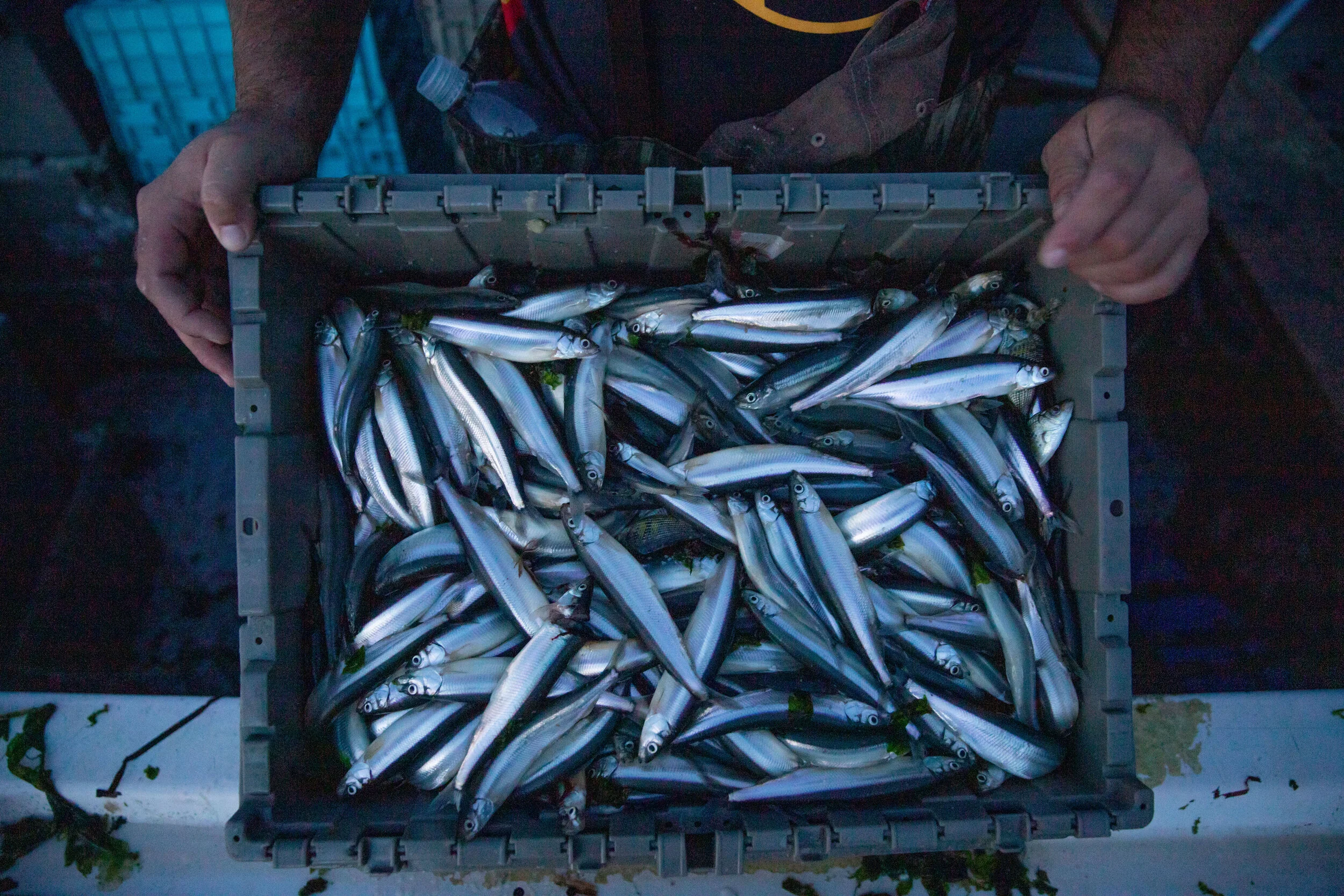We recently funded a project that will study smelt habitat, which is being encroached upon by development. The project uses underwater cages to measure pollution exposure, which you can read about in our June blog post.
The project is led by the Louisa Harding of the Washington Department of Fish and Wildlife as well as NOAA’s Northwest Fisheries Science Center.
Photojournalist Gemina Garland-Lewis has been shadowing the team’s progress in the field and shared these photos from a series of recent excursions.
Dr. Louisa Harding and Mark Tagal check in on the surf smelt embryos they've planted out earlier in the week. Every few days, they'll check in to see how everything looks by the naked eye (and smells!), then take a small subset of the embryos to check under the microscope. Dr. Harding also downloads information on temperature and light and from a small data logger that is stored inside the cages with the embryos.
Josh Cousins, a commercial smelt fisherman, shows off part of the evening's harvest to Mark Tagal back at the beach. Mark often utilizes the fish that commercial or recreational fishermen have caught in order to harvest gametes for his research, and keeping close ties with the community is an essential part of the research process.
Taking the recent temperatures and embryo checks into account, Mark estimates what the optimum time to do the final collection from the beach is. Too soon, and the embryos won't be developed enough yet for them to analyze viability in the cages. Too late, the embryos will hatch and the young fish will smash themselves against the cup until they die and nothing usable for the research is left. When ready, the embryos are scooped into small vials and taken for imaging.
Dr. Harding takes notes about each of the vials that they have placed embryos in during the day's collection at their Utsalady Point site on Camano Island. Collection can only happen during a lower tide so that the cages are accessible to dig up on the beach, and here the team was fighting against a rapidly rising tide to get collection done in time.
Due to the pandemic, normal processes for getting embryos to the lab for imaging have been halted, leaving Dr. Harding doing imaging of the embryos from a scope in her basement. She meticulously checks each embryo for viability and separates them on the plate, counting each group of live or dead. Some mortality is expected when the embryos are developing in the wild vs.the lab, and these counts help establish how well Mark's cage design is working for their in situ monitoring.






